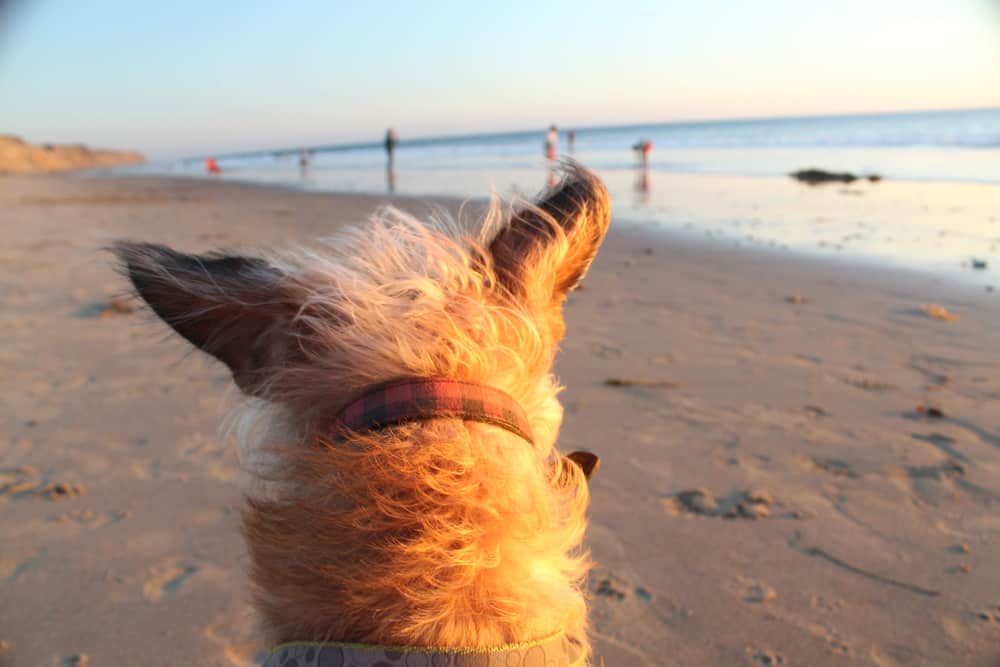“This post contains affiliate links, and I will be compensated if you make a purchase after clicking on my links.”
More than 600 tons of dead marine life have washed onto Florida shores during one of the worst red tide events the Sunshine State has seen in many years. As harmful red tide blooms spread across beaches along Florida’s Gulf, killing off fish and sickening birds, many are wondering if pets could be at risk from eating tainted seafood, inhaling ocean air, or swimming.

To provide some clarity on the red tide and dogs, Erick Mears, DVM, DACVIM, Medical Director, BluePearl Specialty and Emergency Pet Hospital in Tampa, Fla., answered a few of the most pressing pet owner questions.
What is red tide?
Red tide, or Karenia brevis (K. brevis), is a microscopic algal. There are several algae species that can cause “red tide”, but K. brevis is typically the species found in the Gulf of Mexico. Red tide is generally associated with saltwater and needs high salinity to survive. The K. brevis produces brevetoxins, which is a neurogenic toxin, affecting the central nervous systems of fish and other vertebrates, causing death. The brevetoxins get into the air when the K. brevis organisms get damaged by the ocean’s waves. This releases the toxin into the air; hence causing respiratory issues that both people and animals can have from exposure.
What can happen if my dog ingests a dead fish linked to red tide?
During or after a red tide, it is important you do not allow pets to play with dead fish or foam that may accumulate on the beach. If ingested, the K. brevis in a dead fish or foam can cause neurological, gastrointestinal, or respiratory damage resulting in seizures, vomiting and diarrhea, and/or coughing wheezing. If you think your pet has potentially been exposed to K. brevis, immediately seek veterinary care.
Is it safe for my pet to swim in red tide?
If dogs get into the water with red tide, it is important to wash them immediately once returning to land due to the likelihood of them cleaning themselves and ingesting the toxin. Interestingly, waves and the associated foam which accumulates at the shorelines contain higher toxin concentrations than the water itself.
Are certain pets at higher risk for K. brevis toxicity?
For many geriatric pets with underlying respiratory disease such as tracheal collapse, chronic bronchitis, pneumonia, and pulmonary fibrosis, it is important to not expose them to areas around red tide due to aerosolization and likely sensitivity. If you live close to the beach or plan on visiting a beach during a bloom, consider keeping your pets indoors to prevent respiratory irritation.
Dr. Mears says that while it is best to keep pets away and off the beach during a red tide bloom, if you decide to bring your pet along, be sure to wipe them down thoroughly after any exposure and consistently check for symptoms or irritation on skin or eyes.
You may be able to avoid high concentration beaches by using the MyFWC interactive map, which shows the abundance of K. brevis in samples collected statewide over the last eight days and is updated daily.
BluePearl Pet Hospitals in Clearwater, Sarasota, Tampa, and Brandon are open 24 hours a day, seven days a week to provide advanced emergency care to pets. Find a local BluePearl Pet Hospital.















Anthony
Aug 2, 2021 at 4:53 pm
Great article,Brandy. It is very troubling that red tide is back on the Florida Gulf Coast. It’s tragic to witness the affect it has on marine life. We appreciate your making this information available to the public with guidelines to protect our dogs from being exposed to the risk of red tide exposure.
Pingback: As Red Tide Ravages Florida Marine Life, How Safe Are Your Dogs? – DogNewsWalk